Twenty-nine years is a long damn time to wait. In 1989, the year that Tim Linehan headed west from New Hampshire to settle in Montana’s remote Yaak Valley, the Berlin Wall came down, the very first GPS satellite went up and Seinfeld premiered on television. A lot has changed since then, and over the following twenty-nine years, Tim and his wife, Joanne, built one of the most respected outfitting businesses in Montana. All the while, Tim waited, year after year, for a coveted Montana moose tag.
. . .
I first came to The Yaak in the fall of 2018 to chase mountain grouse in the Purcell Mountains with Tim and his brace of setters. I was blown away not just by the exceptional hunting but also by the reception I received from Tim and his wife, Joanne. A New Hampshireman by birth and a steadfast Red Sox fan to this day, Tim hasn’t lost an inch of his New England accent. He carries an excited energy, and his eyes are sharp and smiling. Joanne is the closest thing to a saint I’ve ever met, and her immense strength is hidden within a small frame and ever-smiling face. I was also taken by the ease with which Tim, a man nearing 60, moved through the thick timber of ruffed grouse habitat and up the steep, exposed slopes that led to blue grouse territory. While this valley may not be his by birth, it has taken him in so deeply that he seems as at home here as the wolves that have inhabited the Yaak, without interruption, for millennia.
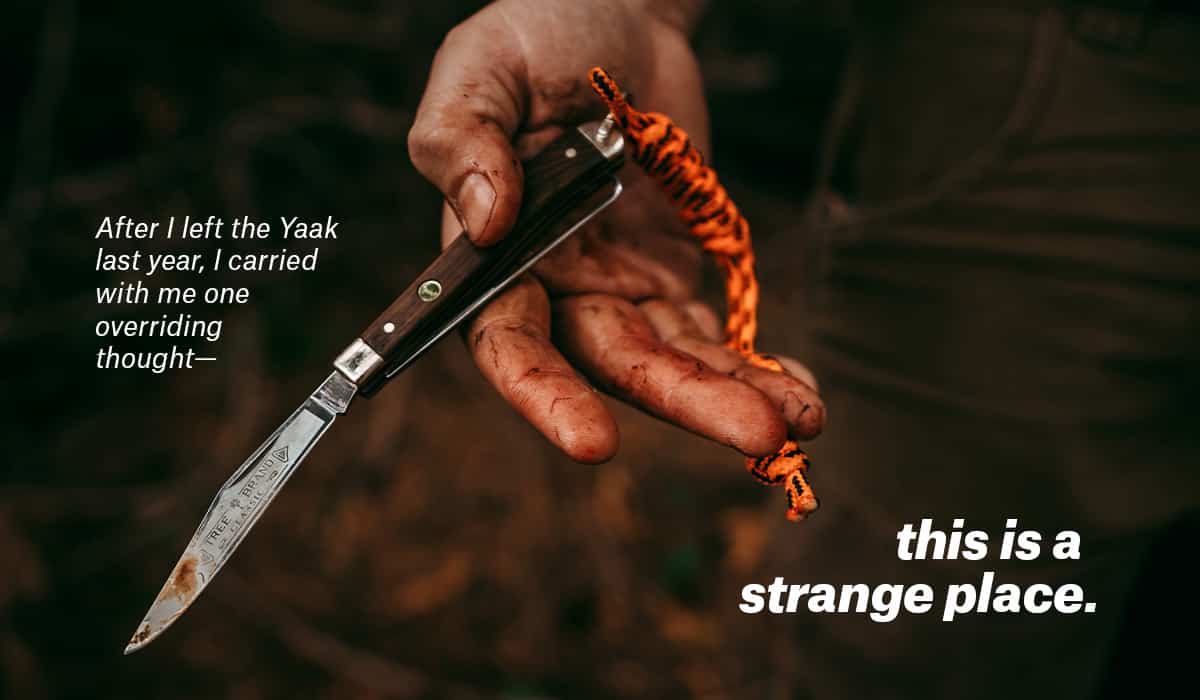
After I left the Yaak last year, I carried with me one overriding thought—this is a strange place. It isn’t the kind of strange that pushes one away, though. For the intervening year, the Yaak had exerted an almost magnetic pull on me. It wasn’t as though I had much choice in the matter—I had to go back. This is a place unlike any other, sure, but that sense of comparison only serves to cheapen it. It is a place that stands on its own, a unique combination of loggers and hippies, of old lefts and hard rights and of came-here conspiracy theorists looking for a place to hide and born-here locals who’ve never felt a demand for cosmopolitan conveniences. Need the police? They’re in Libby, an hour south.
Returning in mid-September with onX Creative Director Dave Fields, then, felt like going home to a place that was never mine. We easily settled into one of the three cabins on the Linehan’s 25-acre piece and watched from the porch, drinks in hand, as the last of the evening light climbed toward the ridge on the far side of the valley. For the next few days, we wouldn’t see another hunter. We would, however, see a lot of birds.
. . .
Tim came to the Yaak almost by accident. After finishing school at the University of New Hampshire with a Creative Writing degree, he found himself driving up to northern New Hampshire to work in a fly shop on weekends. After scanning the pages of Fly Fisherman magazine and sending resumes to the fly shops that caught his attention, Tim secured a gig in Twin Bridges, MT. Through a series of fortunate coincidences, he was able to find a job caretaking a house in Yaak for the winter through his friend, Rick Bass. The plan was to head down to Twin Bridges when the snow melted, but things didn’t work out that way. Having fallen in love with the Yaak, Tim simply decided to stay. Joanne joined him soon after, teaching in the one-room schoolhouse and slinging drinks at the Red Dog Saloon as they began building a life together in Montana’s remote northwest.
After the caretaking gig wrapped up, Tim went to work for a local outfitter and quickly took to the life. A couple years later, he was ready to head out on his own. In 1992, Linehan Outfitting Company was founded.
Since that time, Tim and Joanne have steadily built one of the most respected outfitting businesses in the state. Their motto, a guiding light as true today as it was at the outset, shines through in everything they do—it’s never been their ambition to be one of the biggest Montana fly fishing or Montana hunting companies in the West, it says, just one of the best.
. . .
The forests of Yaak almost remind me of where I grew up in western North Carolina. Sure, the trees aren’t the same and winter is meaner, but they are similar in how heavy they feel. These are the woods in which I’m comfortable, where the sunlight has to work to reach the forest floor and the air is thick with moisture. Following dogs in a place like this just feels right.
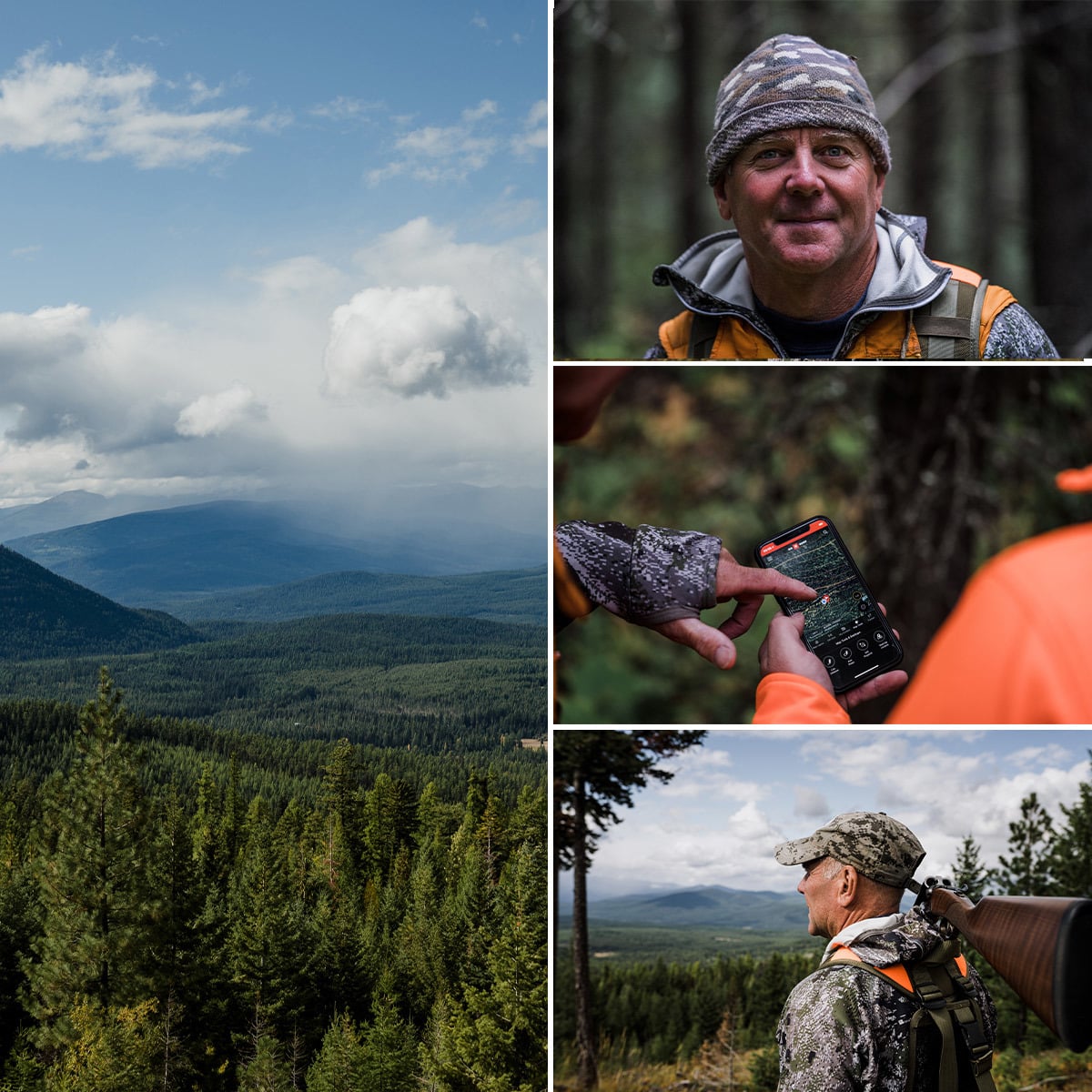
Tim turns his brace of setters loose in the morning fog. We follow. The dogs move gracefully over the blowdown and through the thick underbrush, but the first cover fails to produce a single bird. Back at the truck, Tim looks worried. Never mind, we say, all aware that the birds are plentiful here and that a single empty patch of woods does not portend a fruitless day. We move on, and things get busy.
By early afternoon, we’ve shot our limit, a mixed bag of ruffed and spruce grouse. The shooting is quick and reactive in these thick woods, and many more birds have ducked our volleys and disappeared into the canopy. The birds are gutted at the truck, stray feathers and innards buried shallow to obscure our success. In these moments, with full game bags and tired dogs, Tim is reflective and reverent. He knows this valley is special—perhaps he knows it more than anyone. In this place, a couple of kids from New England can stake a claim, build a business, and fight to preserve the things that drew them in decades ago.
. . .
Tim and Joanne built Linehan Outfitting Company, as they like to say, the old-fashioned way. They never solicited outside funding, figuring that coupling magazine ads and trade show hustle with unforgettable guest experiences would be enough to build a loyal customer base. “It’s a slower boat,” Tim says, “but there’s a substantial measure of satisfaction having done it all by ourselves.”
Over the years, a love of the country drove Tim and a group of friends and neighbors, including the author and current Board Chairman Rick Bass and current Executive Director Robyn King, to establish the Yaak Valley Forest Council (YVFC), a conservation organization dedicated to protecting and restoring the Yaak Valley. According to the YVFC, “the lowland temperate rainforests of the Yaak are a refuge for the diversity of life that call the Rocky Mountains their home, yet this special place is one of the rarest and most underprotected ecosystems in our nation.”
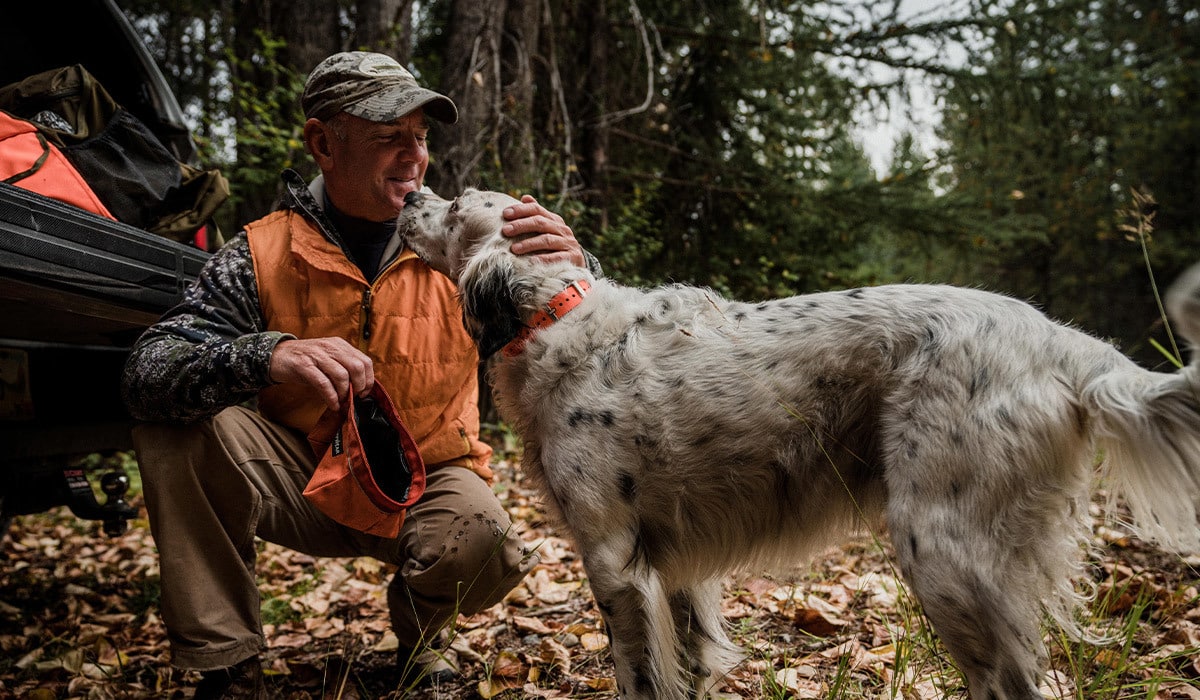
Tim’s conservation ethic is balanced and reasonable but exceedingly passionate. Modern logging practices do not pose the problems that the logging of decades ago did, and the necessity of providing a source of revenue for such a remote community is not to be ignored. The YVFC’s fight, from the beginning, has been to protect the roadless areas within the Yaak. “Here we are, this last wild place in the lower 48 states,” he says. “I was just interested in making a run at trying to get some specific wilderness areas designated here in the Yaak drainage, but we’ve had fits and starts and I don’t really know if it’ll ever go now.”
Despite this, the YVFC’s work has been incredibly impactful for the valley, establishing partnerships with Montana Fish, Wildlife and Parks (FWP) to collect forest data and with Trout Unlimited to replace culverts to allow for the native Westslope cutthroat trout to move upstream to spawn. It is these projects, the seemingly small undertakings that produce big results, that the YVFC is well-suited to handle. As Tim says proudly, “That’s the sort of stuff the Forest Council does really well and is doing most of these days.”
. . .
Tim first applied for Montana’s moose, sheep, and goat tags when he arrived in 1989. While he concedes that he may have missed a year or two, he accumulated an impressive haul of points while guiding dozens of hunters to success in Montana’s game-rich Unit 100, an area that covers nearly half a million acres, 91% of which are public land. Over the last 12 years, the only clients who have been unsuccessful in filling moose tags are the discriminate few who passed on opportunities when the bulls just weren’t big enough—100% of Tim’s clients have been put on legal bulls, a fact that says as much about Tim’s skill and work ethic as it does about the unit itself.
Tim spends a few weeks guiding on the Missouri River each May, and it was during this stint that Joanne logged in to the FWP website to check the draw results. As Tim was out of cell range, Joanne first called Sean McAfee, Linehan Outfitting Company’s right-hand man. According to Joanne, Sean was as excited as he would have been had he drawn the tag himself. Tim’s reaction upon finally learning of his luck was more subdued, resulting, he says, from the fact that his head was deep in trout guiding mode. It was only in the days after hearing the news that it all started to sink in. After decades of disappointment, he had finally drawn the tag of a lifetime.
. . .
After returning to the Yaak and working through the fall’s schedule, Tim identified four days during the rut in which we could focus his attention on filling the tag. Just a few days before his own hunt began, Tim and Sean put a client on a Boone & Crockett bull. After his own hunt yielded an uneventful first day, the second morning revealed a young bull that just didn’t measure up. With a once-in-a-lifetime tag such as this, Tim was willing to wait.
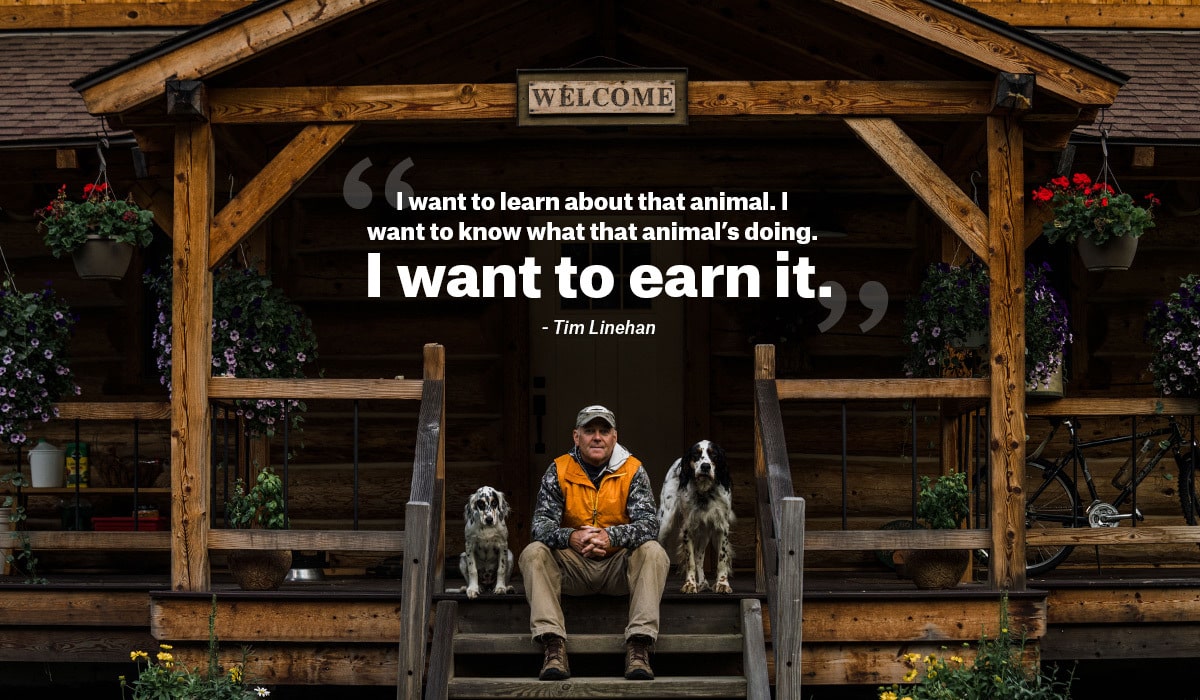
“So, anyway, we bail out of there and head up into the same area where we had killed that big bull two days earlier,” Tim says. “We’re sneaking along, Sean ahead and Seth, another one of our guys, behind. We had caught fresh grizzly tracks the minute we stepped out of the truck, so we’re really just paying attention because it’s thick, north-facing spruce with literally head-high alder. There are places I can’t even see over. The reason we didn’t go there first was because there’s a carcass in there and we knew those bears were right there. We were really on edge, just sneaking, cow-calling a bit. All of a sudden, Sean turns around, wide-eyed, and throws his hands up. I immediately grab for my bear spray.”
It wasn’t a grizzly guarding a carcass, however, that stopped Sean in his tracks. It was a mature bull, the kind of bull Tim had been waiting for. From just 70 yards, Tim loosed a single round that dropped the bull where he stood. After decades of waiting, the moment had come so quickly that Tim was left overwhelmed. “It’s joy. It’s success. It’s earned,” he recalls.
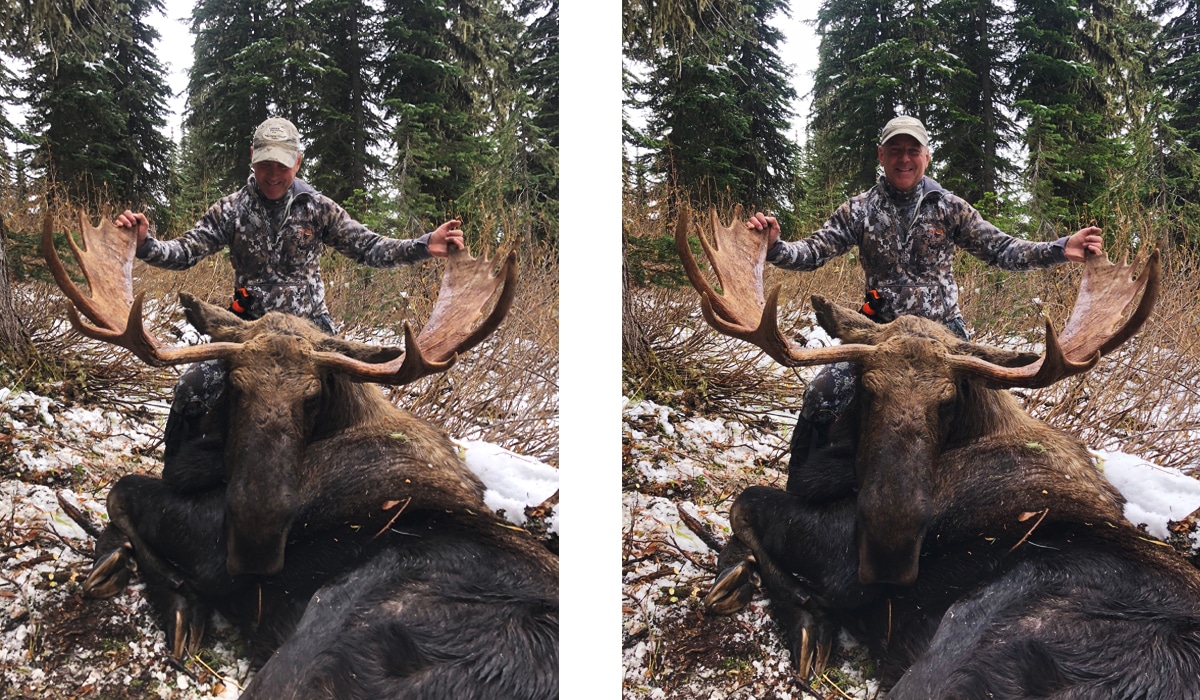
“What was really exciting was the bull we had killed two days before was a monster in his prime, and the bull I killed was probably the king of the mountain,” Tim says. “He was old, ancient, and he had a bruise on his side, probably from that other bull. His whole left flank was just a solid mass of black and blue. His face was scarred and cut, and his muzzle was ancient. There was an old scar across his nose, and both ears were split.”
Tim later learned that his bull was 13 years old, one of the oldest on record in Montana.
. . .
As the final day of the trip comes to a close, Tim and I share an exchange about authenticity, an oft-used word that means something different to everyone. As one of the most judgement-free hunters I know, Tim has an opinion on the topic that is both strong and gracious, and I think it carries a lesson for all of us. “I want to be in where they live. I want to learn about that animal, and I want to know what that animal’s doing. I want to earn it.”
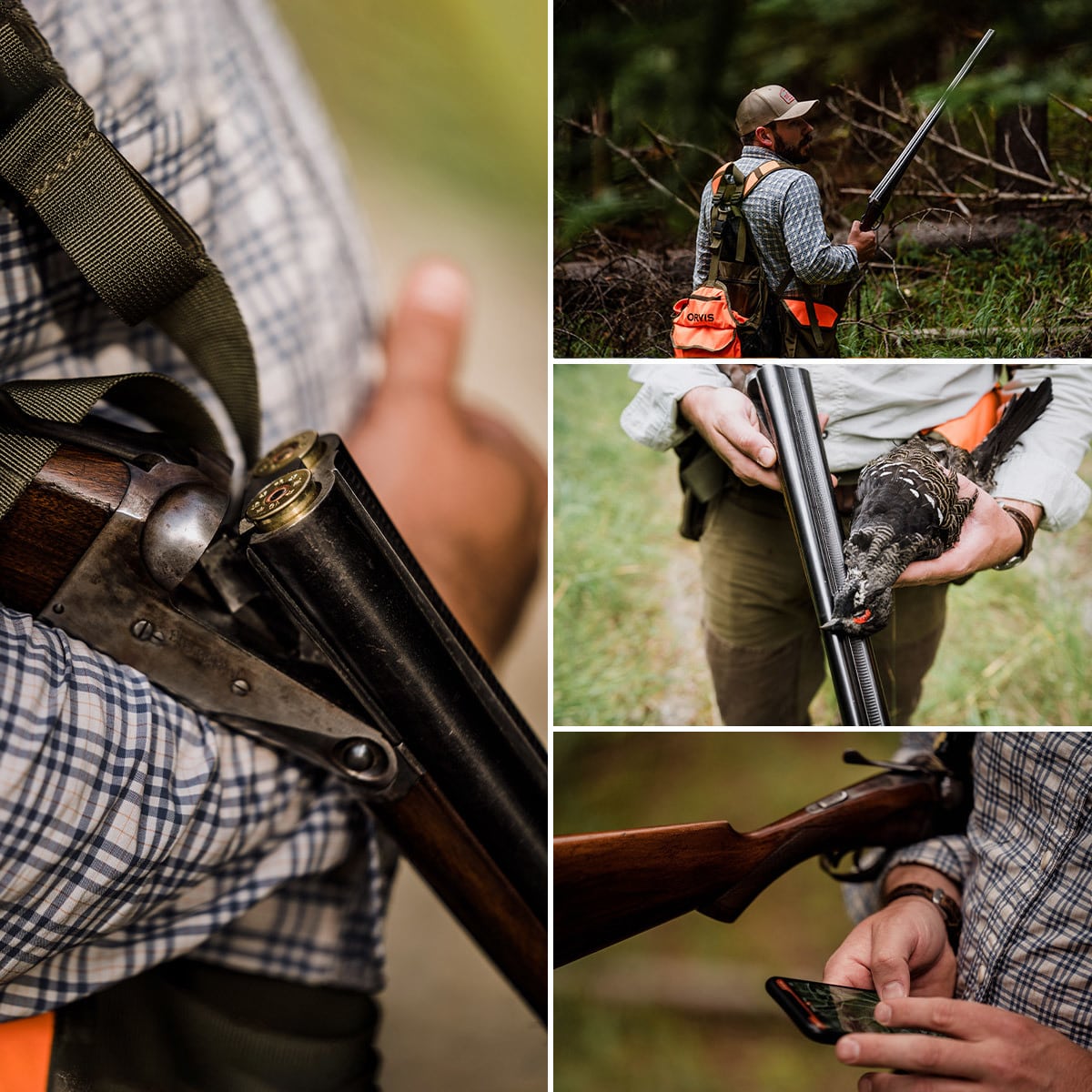
The truck is packed and the cooler is full of birds, gutted and ready to be hung and aged for a few days, maybe a week, once we return to Missoula. Hugs and handshakes follow thank-yous and promises to return next year. Joanne disappears for a moment and returns with two packages, each the size of a brick and neatly wrapped in butcher paper. Scrawled across the paper are just a few words, but they encapsulate everything it means to know Tim and Joanne Linehan.
“Moose. Sept. ‘18.”